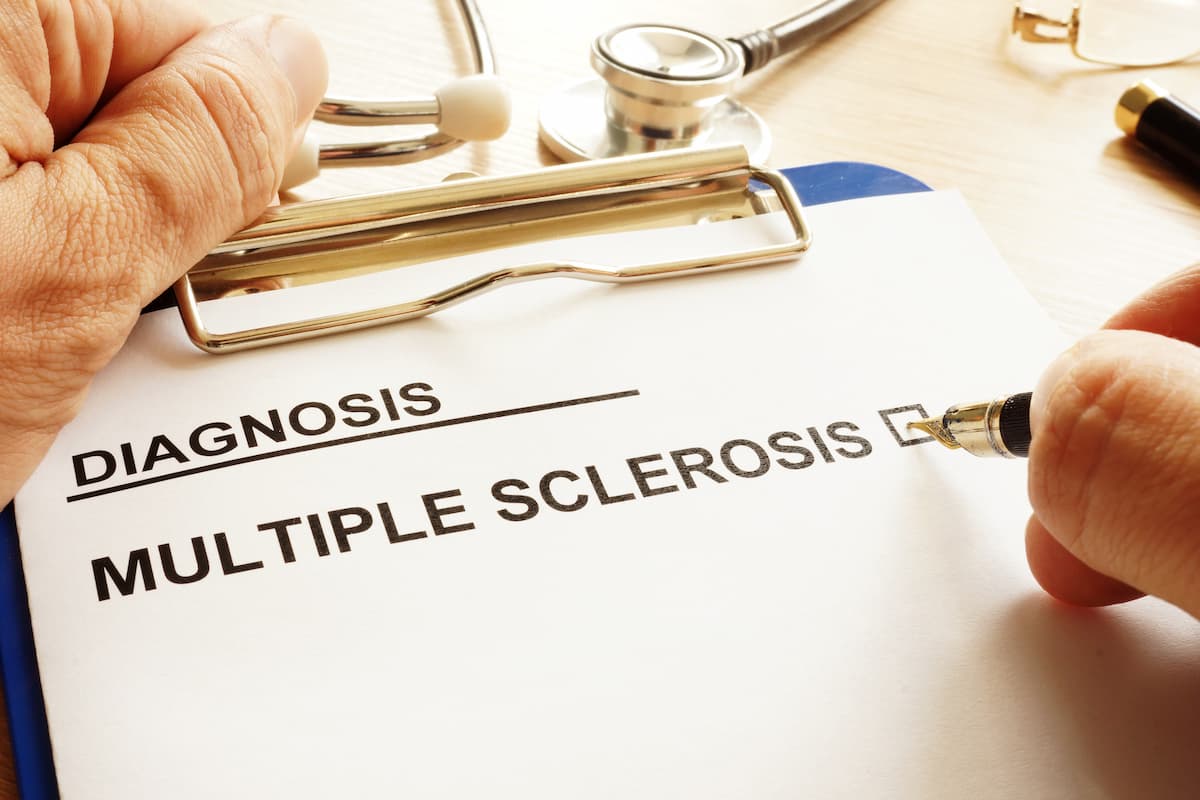- Center on Health Equity & Access
- Clinical
- Health Care Cost
- Health Care Delivery
- Insurance
- Policy
- Technology
- Value-Based Care
Novel Risk Stratification Tool Shows Promise in MS
A predictive tool considering disease duration, age at disease onset, age, and Expanded Disability Status Scale score estimated patients’ risk of transition to secondary progressive multiple sclerosis (MS).
A novel clinical risk stratification tool estimated individual patients’ risks of transition to secondary progressive multiple sclerosis (SPMS), which is associated with worse prognosis and is an area where early predictive tools are needed.1 The findings were published in Multiple Sclerosis and Related Disorders.
The disease course of MS typically progresses from the relapsing-remitting phase (RRMS) to SPMS, which is a degenerative and irreversible phase. When RRMS converts to SPMS, it is more steadily progressive and usually includes nerve damage or loss.2 Conversion to SPMS leads to more rapid disability, less response to disease-modifying therapies, and less benefits from rehabilitation, making it a clinically relevant transition.1
A systematic literature review and advanced analytic techniques informed the development and validation of a tool to estimate the risk of transition to SPMS over 5 years. | Image credit: Vitalii Vodolazskyi - stock.adobe.com

“Because of the significant clinical relevance of this outcome, many studies have set out to identify predictors of conversion to SPMS, including clinical, MRI, genetic, retinal, and patient-reported metrics,” the authors wrote. “This body of evidence provides a foundation for producing clinical tools for estimating risk, like those used in other neurologic and non-neurologic populations.”
The authors conducted a systematic literature review and used advanced analytic techniques to develop and validate a tool to estimate the risk of transition to SPMS over 5 years, with an aim of creating a tool that is well validated, clinically relevant, easy to use, and clinically accessible. Traditionally, predicting SPMS is difficult, but an accurate tool could help individualize clinical management, establish patient expectations, and inform disease-modifying therapy choices, the authors explained.
The tool was created using data from the Jacobs Multiple Sclerosis Center (JMSC) and the Multiple Sclerosis Center Amsterdam (MSCA) collected between 1994 and 2022, with patients in the relapsing-remitting stage of MS at first evaluation. First, the authors identified candidate predictors in a systematic literature review. They then determined ordinal cutoffs, selected relevant features, and weighted the features included in the tool.
“We aimed to create a pragmatic tool for bedside use, without the need for complex equations, online calculators, or computer applications,” the authors wrote. “We therefore made the a priori decision to categorize continuous variables into ordinal predictors for a paper-and-pencil prognostic scoring system.”
There were 2626 patients with MS in the JMSC database and 2791 in the MSCA database, with 1308 and 877 individuals, respectively, meeting criteria for inclusion in the derivation and validation cohorts. The model derivation cohort included 787 patients in the JMSC database, an internal validation cohort included 522 patients from the JMSC cohort, and an external validation cohort comprised 877 patients from the MSCA cohort.
The median follow-up was 4.9 years in the JMSC database and 5 years in the MSCA database, and median disease duration was 6.8 years and 4.4 years, respectively. Expanded Disability Status Scale (EDSS) scores were a median of 2.0 and 3.0, respectively. In the JMSC database, 144 (11%) patients converted to SPMS, and 135 (15.4%) in the MSCA database transitioned to SPMS.
A total of 38 possible predictors were found during literature review, and 21 were considered for the prognostic tool. Following exclusion due to missing values, 12 possible variables remained. Finally, 4 values—disease duration, age, age of disease onset, and EDSS—were retained because they explained significant and unique additive variance relevant to the risk of SPMS occurrence. The authors named the tool the DAAE score, reflecting the included variables.
The DAAE score ranges from 0-12 points and classifies patients as very low risk (0-2), low risk (3-7), medium risk (8-9), and high risk (10 or higher). In the JMSC derivation cohort, the risk of SPMS was 2.7%, 7.4%, 18.8%, and 40.2% in the very low–, low-, medium-, and high-risk groups, respectively. In the internal validation cohort, the risk of SPMS conversion was 2.9%, 6.8%, 26.8%, and 36.5%, respectively; in the external validation MSCA cohort, risk of transition was 7.5%, 9.6%, 22.4%, and 37.5%.
The tool performed comparatively to a machine-learning model, and in a survey of physicians specializing in MS care from 21 countries, the mean System Usability Scale score for the DAAE was 90.3 out of 100, indicating high usability.
“The DAAE Score estimates patient risk of transition to SPMS over 5 years consistently across datasets internationally, and it performs binary predictions well relative to a machine learning model,” the authors concluded. “It is an easy-to-use tool, only requiring clinically accessible data and is strongly rated for usability by physicians specialized in MS care. With further validation, the DAAE Score could be used for clinical risk estimation and personalized care for individual people with MS.”
Reference
1. Fuchs TA, Zivadinov R, Pryshchepova T, et al. Clinical risk stratification: Development and validation of the DAAE score, a tool for estimating patient risk of transition to secondary progressive multiple sclerosis. Mult Scler Relat Disord. Published online July 6, 2024. doi:10.1016/j.msard.2024.105755
2. Secondary progressive multiple sclerosis (SPMS). National Multiple Sclerosis Society. Accessed August 16, 2024. https://www.nationalmssociety.org/understanding-ms/what-is-ms/types-of-ms/secondary-progressive-ms
